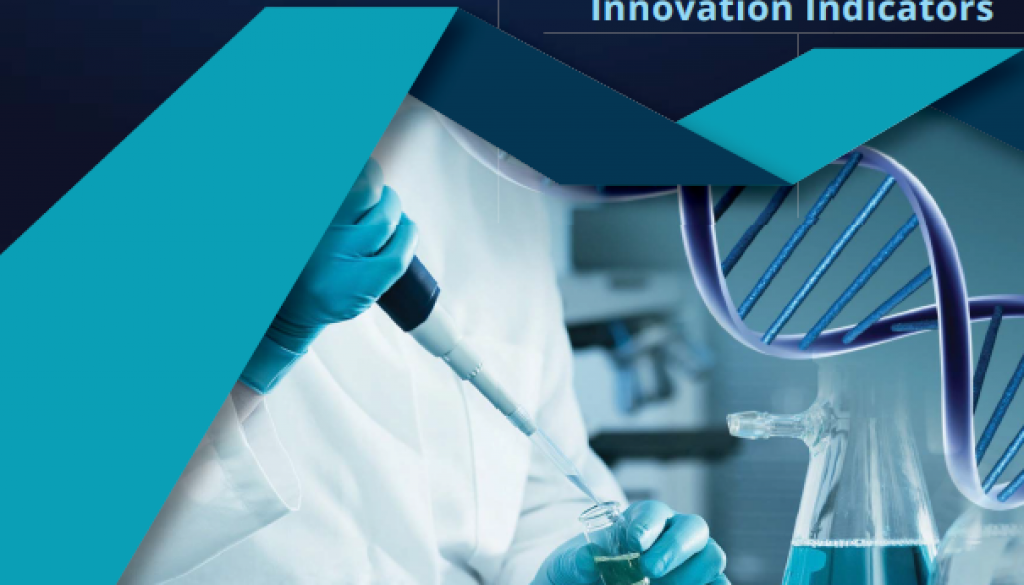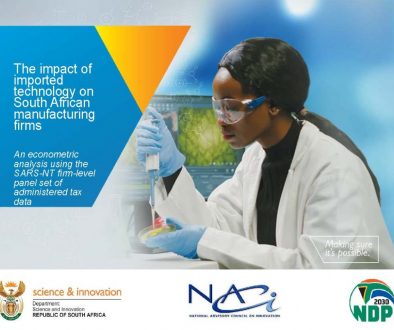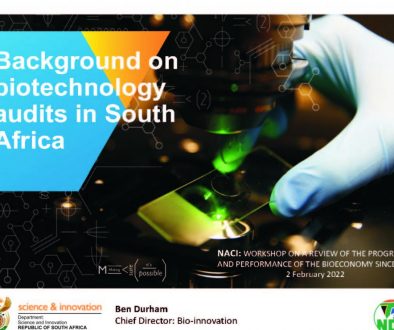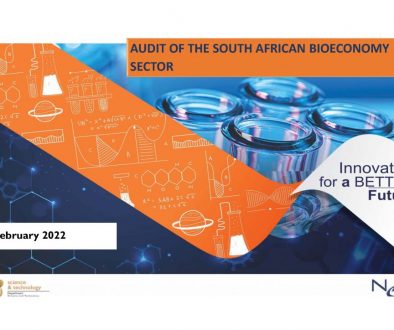South African STI Indicators Booklet 2016
Foreword by Prof Cheryl de la Rey (NACI Chairperson)
On behalf of the National Advisory Council on Innovation (NACI), I am delighted to present the annual report on the 2016 South African Science, Technology and Innovation (STI) Indicators. This publication is part of our contribution to building the monitoring, evaluation and learning capability necessary for assessing the state of the National System of Innovation (NSI).
The 2016 STI indicators report is based on the analysis of NSI performance during the period between 1996 and 2016. Coincidentally, the government is leading a process of reviewing the current 1996 White Paper on Science and Technology and developing the new White Paper on STI. Therefore, the 2016 STI indicators report can provide necessary input into the current policy development process.
The 2016 STI indicators report identifies areas of progress but also points to the lack of progress in certain areas of the NSI. First, the NSI human capital pipeline remains constrained. The percentage of matric learners who passed mathematics and physical science with at least 50% remains low. The proportion of matric female learners passing mathematics and physics with at least 60% has been declining from 2008 to 2016. Unsurprisingly then, the undergraduate percentage of SET enrolment has remained stagnant between 2005 (29.4%) and 2015 (29.7%).
Notwithstanding, at the postgraduate level, the proportion of science engineering and technology (SET) enrolment as a percentage of total student enrolments has increased between 2005 and 2015.
Second, there has been notable progress in the expansion and transformation of research capacity. The percentage of female researchers (full-time equivalent) increased from 2001/02 (38.4%) to 2014/15 (44.1%). The proportion of female academic staff with doctoral degrees increased between 2005 (30.4%) and 2014 (39.1%) and the proportion of black (African, Coloured and Indian) female academic staff with doctorates also increased albeit slightly.
Third, the international benchmarking of mobile cellular subscriptions indicates that South Africa is doing well in diffusing ICT access through mobile cellular devices per 100 people. This is an important step if South Africa seize the opportunities and benefits of digitisation and the fourth industrial revolution or new production revolution.
Fourth, the R&D intensity or business expenditure on R&D in the agricultural sector increased from 0.29% in 2003/04 to 0.66% in 2014/15. This is welcomed given the declining R&D intensity in manufacturing and other key industrial sectors on the one hand; and the importance of strengthening research and innovation related to food security on the other hand.
Fifth, there has been notable progress in knowledge generation. South Africa’s world share of publications increased from 0.39% in 1996 to 0.69% in 2015.
On behalf of the NACI Council and Secretariat, we sincerely hope that all NSI stakeholders (including policymakers, the private sector, and nongovernment organisations), will find this STI indicators report informative and useful.
We especially hope that the data will serve as a source of acknowledgment for the work done in the areas where South Africa has shown progress and where we have not, it will inspire us all to focus our efforts on addressing the challenges.
Prof. Cheryl de la Rey
NACI Chairperson




